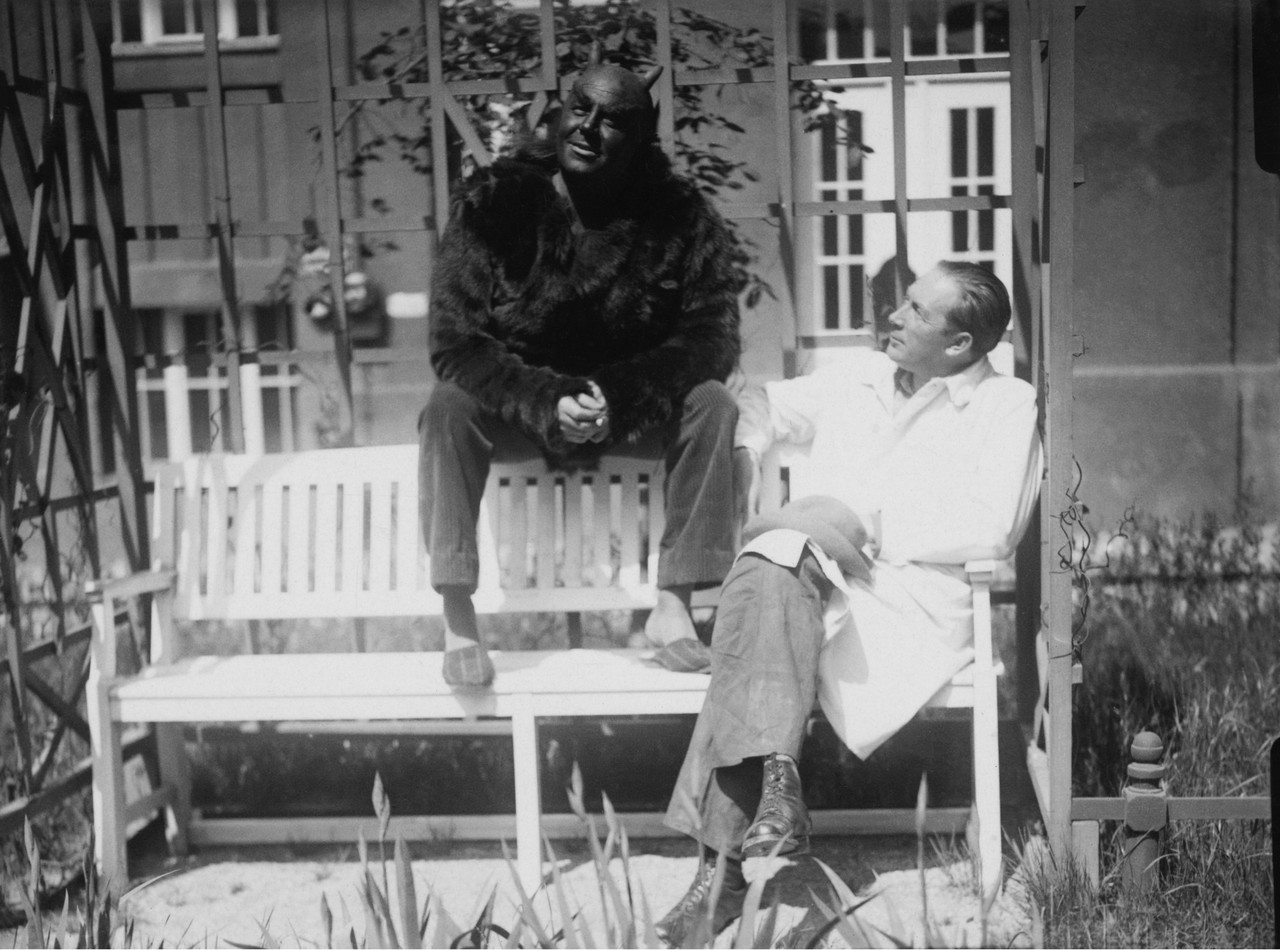Friedrich Wilhelm Murnau
26 Oct 2016 - 26 Feb 2017

Hans Natge (Photograph)
Emil Jannings (li.) und Friedrich Wilhelm Murnau (re.) during filming of„Faust. Eine deutsche Volkssage“
Director: F. W. Murnau (GER 1926)
Photo: Deutsche Kinemathek
Emil Jannings (li.) und Friedrich Wilhelm Murnau (re.) during filming of„Faust. Eine deutsche Volkssage“
Director: F. W. Murnau (GER 1926)
Photo: Deutsche Kinemathek
FRIEDRICH WILHELM MURNAU
An Homage
25 October 2016 – 26 February 2017
Curated By Karin Althaus
"Nosferatu", "Faust", "The Last Laugh", "Sunrise", "Tabu": Friedrich Wilhelm Murnau (1888 – 1931) wrote film history. Between 1919 and 1930, he shot twenty-one films on location in Germany, the United States, and Tahiti. The leading director of the silent film era was born Friedrich Wilhelm Plumpe. He adopted his alias under which he became famous after spending a wonder¬ful summer in Murnau in Upper Bavaria, where the "Blue Rider" and the modernist arts scene congregated. As part of its on- going exploration of the phenomenon of expres-sionism, enbachhaus devotes an exhi¬b¬ition project to Friedrich Wilhelm Murnau paying homage to his innovative film language and the unique global impact of the early art of film.
The exhibition presents film through the lens of film. Lenbachhaus invited contemporary directors to engage with Friedrich Wilhelm Murnau’s work. Five essay films and shorts by Alexander Kluge, Ulrike Ottinger, Guy Maddin and Evan Johnson, Luc Lagier, and a team from the University of Television and Film Munich harness the specific means of film to each examine one work by Murnau. The selection including "Nosferatu", "Faust", and "Tabu"—also guided the choice of materials that complete the exhibition: drawings and photographs by Murnau as well as some of his collaborators, such as Albin Grau, Hans Natge, and Robert Herlth.
Concurrently with the exhibition at Lenbachhaus, the Munich Film Museum presents a comprehensive retrospective of Murnau’s oeuvre, offering visitors a rare opportunity to see all existing films in carefully restored versions accompanied by internationally renowned silent-film musicians.
An Homage
25 October 2016 – 26 February 2017
Curated By Karin Althaus
"Nosferatu", "Faust", "The Last Laugh", "Sunrise", "Tabu": Friedrich Wilhelm Murnau (1888 – 1931) wrote film history. Between 1919 and 1930, he shot twenty-one films on location in Germany, the United States, and Tahiti. The leading director of the silent film era was born Friedrich Wilhelm Plumpe. He adopted his alias under which he became famous after spending a wonder¬ful summer in Murnau in Upper Bavaria, where the "Blue Rider" and the modernist arts scene congregated. As part of its on- going exploration of the phenomenon of expres-sionism, enbachhaus devotes an exhi¬b¬ition project to Friedrich Wilhelm Murnau paying homage to his innovative film language and the unique global impact of the early art of film.
The exhibition presents film through the lens of film. Lenbachhaus invited contemporary directors to engage with Friedrich Wilhelm Murnau’s work. Five essay films and shorts by Alexander Kluge, Ulrike Ottinger, Guy Maddin and Evan Johnson, Luc Lagier, and a team from the University of Television and Film Munich harness the specific means of film to each examine one work by Murnau. The selection including "Nosferatu", "Faust", and "Tabu"—also guided the choice of materials that complete the exhibition: drawings and photographs by Murnau as well as some of his collaborators, such as Albin Grau, Hans Natge, and Robert Herlth.
Concurrently with the exhibition at Lenbachhaus, the Munich Film Museum presents a comprehensive retrospective of Murnau’s oeuvre, offering visitors a rare opportunity to see all existing films in carefully restored versions accompanied by internationally renowned silent-film musicians.
